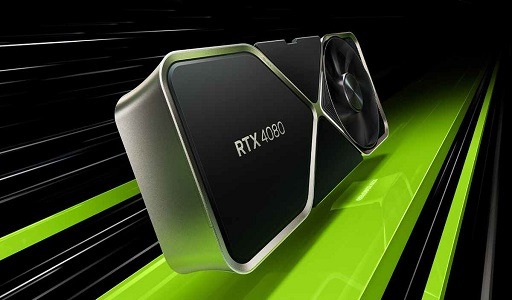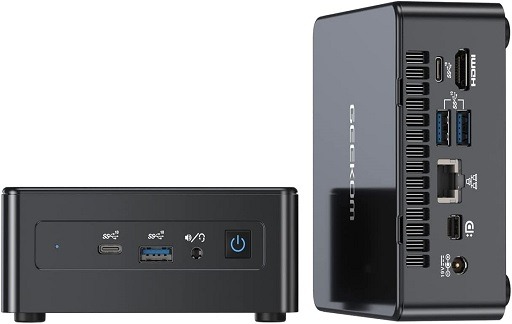The Nvidia RTX 4080 isn’t a game changer. In terms of raw performance, it’s still one of the best graphics cards you can buy, only trailing the behemoth RTX 4090. However, it is not the game-changing GPU that Nvidia’s previous flagship was.
In terms of performance, the RTX 4080 is an excellent demonstration of Nvidia’s new Ada Lovelace architecture’s efficiency. However, despite its low price, it falls far short of the RTX 4090 in terms of performance. Features like DLSS 3 continue to distinguish the RTX 4080 among today’s graphics cards, but buyers looking for a $1,000-plus GPU face a difficult decision when pitted against the RTX 4090.
In the previous generation, Nvidia experienced too much performance crowding — many high-end models were within a few frames of each other, despite significant price differences. Nvidia now faces the inverse problem.

Nvidia RTX 4080
We can finally compare specs because this is the second card in Nvidia’s Ada Lovelace generation. Although the RTX 4080 is 25% less expensive than the RTX 4090, it has a significantly reduced GPU. The RTX 4080 has 41% fewer CUDA cores, 47% fewer ray tracing cores, and 47% fewer Tensor cores. As I’ll explain later, lower core counts translate into performance differences.
The core count differences are the most noticeable. Otherwise, the RTX 4080 has 8GB less GDDR6X memory than the RTX 4090 and a smaller 256-bit memory bus. The clock speed is also slightly lower at the base, though when boosted, the two cards are nearly identical.
Because of these various cuts, the RTX 4080 has 130 watts less Total Board Power (TBP) than the RTX 4090. At 320W, it matches the previous generation’s RTX 3080. However, as I’ll explain later, the RTX 4080 will rarely consume the full 320W.
All of my testing results were obtained using a Ryzen 9 7950X with 32GB of DDR5-6000 memory. I also used Gigabyte’s Aorus Master X670E with the most recent BIOS. Remember this because early AM5 BIOS versions can cause performance issues with RTX 40-series GPUs.
You may also like What is NVIDIA DLSS and which games does it support?
Nvidia RTX 4080 Performance on 4K Gaming
The RTX 4080 is a 4K graphics card even without upscaling. Expect it to maintain above 60 frames per second (fps) in today’s most demanding games without ray tracing and even exceed 100 fps on high refresh rate monitors in games like Horizon Zero Dawn. It’s a powerful GPU, but not as powerful as I expected based on the RTX 4090’s performance.
The RTX 4080 is approximately 29% slower than the RTX 4090 across my test suite. Although there is a value issue here that I will discuss later, the generational improvements for the RTX 4080 are still very impressive. You’re looking at a 42% increase over the $1,200 RTX 3080 Ti, and a 22% increase over the RTX 3090 Ti.
Cyberpunk 2077 is the most demanding game in my test suite, and the RTX 4080 barely manages 60 frames per second at 4K with the highest settings. The gains are smaller here than they are elsewhere, with a 14% advantage over the RTX 3090 Ti and a 33% advantage over the RTX 3080 Ti. However, the RTX 4090 continues to lead by a wide margin, outpacing the RTX 4080 by 34%.
Even with narrower margins, the RTX 4080 scores some impressive victories, particularly in AMD-sponsored Assassin’s Creed Valhalla. In the previous generation, AMD’s RX 6950 XT dominated this title, but the RTX 4080 outperforms it by 31%. However, this is not true for all AMD titles. In Forza Horizon 5, the RTX 4080 is only 12% faster than the RX 6950 XT (but 38% faster than the RTX 3090 Ti).
On the Nvidia front, some titles, such as Gears Tactics, have thinner margins. In this game, the RTX 4080 was only 5% faster than the RTX 3090 Ti and 32% faster than the RTX 3080 Ti. It’s an improvement, but keep in mind that the RTX 4090 outperformed the RTX 3090 Ti and RTX 3080 Ti by 74% and 119%, respectively. I repeated the test several times and still got the same results for the Nvidia RTX 4080.
That is the RTX 4080’s worst showcase. The card continues to improve in Horizon Zero Dawn and Red Dead Redemption 2. In Horizon, the card outperformed the RTX 3090 by nearly 30%, and in Red Dead Redemption 2, it outperformed the RTX 3080 Ti by 31%. They’re significant improvements, but the RTX 4090 still dominates by a wide margin.
The RTX 4080’s biggest issue is the existence of the RTX 4090. It wouldn’t even come close if this were a $700 or $800 GPU, as this class was in the previous generation. However, at $1,200, the RTX 4080 and RTX 4090 have a larger performance gap than a price difference. The conventional wisdom is to skip the top dog in a generation to save money while still getting the majority of the performance. With the RTX 4080, Nvidia is attempting to challenge that position. The card is 25% less expensive than the RTX 4090, but it is nearly 30% slower. In comparison, the RTX 3080 is approximately 16% slower than the RTX 3090 and 53% less expensive at the list price.
If $1,200 is the upper limit, the good news is that nothing else can compete with the RTX 4080 right now. Even the $1,500 RTX 3090 Ti trails, though margins are razor thin in some games. The main competition will most likely be AMD’s $1,000 RX 7900 XTX, but that GPU won’t be available for another month.
You may also like Nvidia New RTX 3080 with 12GB of Memory
Synthetic and rendering performance
We ran some synthetic tests before diving into the gaming benchmarks to get a general idea of the RTX 4080’s performance. It outperformed the RTX 3090 Ti by 28% in 3DMark Time Spy, which isn’t surprising given the results obtained with the RTX 4090. Surprisingly, the RTX 4080 is still 19% slower than the RTX 4090.
That’s an excellent performance given the fundamental differences, but not all benchmarks are as favorable. The RTX 4080 trails the RTX 4090 by 30% in 3DMark Port Royal, which focuses on real-time ray tracing performance. However, Nvidia’s latest GPU still outperforms the RTX 3090 in terms of gen-on-gen gains, with a 41% advantage.
The RTX 4080 shines in rendering tests like Blender thanks to its CUDA acceleration. In some cases, it can outperform the RTX 3090, though it is still around 25% slower than the RTX 4090. The performance is excellent, but CUDA is the true winner here. Because AMD’s cards lag far behind even Nvidia’s last-generation GPUs, Team Green is still the way to go for intensive 3D modeling and rendering.
You may also like AMD Radeon RX 7900 XTX vs. RX 7900 XT GPUs compared
Nvidia RTX 4080 Performance on 1440p Gaming
The RTX 4080’s performance improves significantly at 1440p. As the CPU becomes a bottleneck, the RTX 4080 loses around 21% of its performance to the RTX 4090. Despite a smaller gap between Nvidia’s latest GPUs, the RTX 4080 still outperforms the previous generation, with a 26% improvement over the RTX 3090 Ti and a 40% improvement over the RTX 3080 Ti.
With all settings maxed out, you’ll get well above 100 frames per second in the most demanding games available today at this resolution. The RTX 4080 achieved nearly 120 frames per second in Cyberpunk 2077 (14% faster than the RTX 3090 Ti and 31% faster than the RTX 3080 Ti), as well as over 150 frames per second in Red Dead Redemption 2.
Gears Tactics also showed improved scaling as the CPU began to play a larger role. In this test, the RTX 4080 outperforms the RTX 3090 Ti by 17%, compared to a 5% increase at 4K. In Forza Horizon 5, the RTX 4080’s 12% advantage over the RX 6950 XT shrinks to just 7% at 1440p. The RTX 4080 continues to dominate in Assassin’s Creed Valhalla, outperforming the RX 6950 XT by 22%.
You can go through the rest of my benchmarks above, but there’s nothing particularly noteworthy. At 1440p, the RTX 4080 has a little more breathing room, allowing it to compete with the RTX 4090 in a way that its price would imply. However, when compared to previous-generation GPUs, the card achieves similar performance gains at 4K.
You may also like AMD Ryzen 9 7950X vs. Intel Core i9-13900K
Ray tracing performance
Nvidia currently leads the ray tracing charge in PC gaming, but the RTX 4080 isn’t the best example. The card still outperforms the RTX 3090 Ti in terms of performance. Still, the margins are razor thin in some cases, calling Nvidia’s bold claims about its new Shader Execution Reordering (SER) feature into question.
SER alters the order of operations for ray tracing shader computations, making better use of the available hardware and allowing ray tracing instructions to be executed faster. It requires hardware-accelerated GPU scheduling in Windows (which is enabled by default in Windows 11), but SER doesn’t appear to benefit the RTX 4080.
In Cyberpunk 2077, the RTX 4080 is 15% faster than the RTX 3090 Ti at 4K. Although this is an improvement, the RTX 4090 outperforms the RTX 4080 by nearly 48%. Similarly, the RTX 4080 has a 32% advantage over the RTX 3090 Ti in Bright Memory Infinite, but the RTX 4090 still outperforms the RTX 4080 by 46%.
It’s worth noting that the RTX 4090 has nearly twice the number of cores as the RTX 4080. SER clearly improves ray tracing performance, but my results indicate that SER scales with core count. I’m concerned that as we go lower in Nvidia’s new generation, ray tracing performance will suffer. I’m sure we’ll see significant generational improvements, but probably not on the scale of the RTX 4090.
The results are even closer at 1440p, with the RTX 4080 matching the RTX 3090 Ti in Cyberpunk 2077. The RTX 4080 remains a powerful ray-tracing GPU, far outperforming anything from the previous generation. However, in Cyberpunk 2077 at 1440p, the RTX 4090 leads by 51%, a significant margin given the price difference between it and the RTX 4080.
You may also like Intel Core i7-12700K vs. AMD Ryzen 7 7700X
Power draw and thermals
The RTX 4080 has a TBP of 320 watts, which is the same as the RTX 3080. It’s significantly lower than the 450W TBP of the RTX 4090, but that’s not the most surprising aspect of the RTX 4080. Even with 320W available, it rarely achieves that power draw. The card averaged 271.6W across my test suite. That’s roughly 60W less than the RTX 3080 Ti and 3090, and nearly 140W less than the RTX 3090 Ti. Although Nvidia’s most recent GPUs consume a lot of power, they’re highly efficient when compared to the previous generation.
When it comes to frames per watt, the RTX 3080 Ti produces approximately 0.16 frames for every watt consumed. In comparison, the RTX 4080 generates 0.28 frames per watt consumed. This is far from a perfect way to measure efficiency, but it does show how much more performance you get as power scales. The card stayed cool as well, with a maximum temperature of 63 degrees Celsius throughout the test suite for the Founder’s Edition design. That’s one degree lower than the RTX 4090, but five degrees lower than the Founder’s RTX 3090. I should mention that I tested on an open-air bench, so temperatures in a PC case will be slightly higher.
DLSS 3 on the RTX 4080
Although performance isn’t spectacular, the RTX 4080 has a significant advantage over previous-generation offerings: Nvidia’s third iteration of Deep Learning Super Sampling. DLSS 3 is divided into two parts. The first is DLSS Super Resolution, which is supported by all RTX GPUs, and the second is DLSS Frame Generation, which is only supported by RTX 40-series GPUs.
DLSS 3 on an RTX 40-series GPU, in essence, can generate a new frame every other frame, theoretically doubling your frame rate without sacrificing performance. In reality, the situation is more complicated, but DLSS 3 is still impressive. The RTX 4080, for example, could only manage a 1 fps average in 3DMark’s Port Royal at 8K (and that’s with some generous rounding). When you enable DLSS 3 with Frame Generation and the Ultra Performance mode, your performance will increase by 700%. This isn’t a real-world test, but it does demonstrate what DLSS 3 is capable of.
The gains in a game like A Plague Tale Requiem at 4K are more reasonable, but still impressive. The Auto mode of DLSS increased frame rates by 144%. Super Resolution is also impressive on its own, providing a nearly 80% increase over native resolution. The same is true when ray tracing is enabled in Cyberpunk 2077. The RTX 4080 boosts its average frame rate from 29 to over 110 frames per second with DLSS, representing a more than 290% increase over native resolution.
DLSS 3 isn’t perfect, as I detailed in my RTX 4090 review. Image quality can occasionally suffer, as evidenced by a selection of games captured in the video below.
Will the RTX 4080’s power connector melt?
Will the power connector on the RTX 4080 melt? I’m not sure. Following the release of the RTX 4090, reports of melted 12-pin power connectors flooded in. This is due to the power connector not having enough clearance coming out of the GPU, which causes some pins to loosen and melt the connector’s plastic.
We had two RTX 4090s running around the clock for a couple of weeks during the review period, and the connectors are fine. Similarly, I tested three RTX 4080s and all of the power connectors are still intact. That doesn’t mean the RTX 4080 won’t have the same problem that the RTX 4090 has, though. The Founder’s Edition is the same size as the RTX 4090, and the MSI Suprim X and PNY XLR8 Gaming are the same size as their RTX 4090 counterparts. That means most cases will still bend the connection.
According to reports, only some connectors are capable of melting. There appear to be two manufacturers, one with a less secure latching mechanism. According to other reports, some connectors use 150V wire while others use 300V wire, and only the 150V versions fail. Whatever the cause, the problem does not affect all 12-pin adaptors.
Despite reports of melting connectors, Nvidia has promised customers an “accelerated RMA process.” And the number of people affected appears to be small.
Would you like to read more about Nvidia RTX 4080-related articles? If so, we invite you to take a look at our other tech topics before you leave!
![]()












